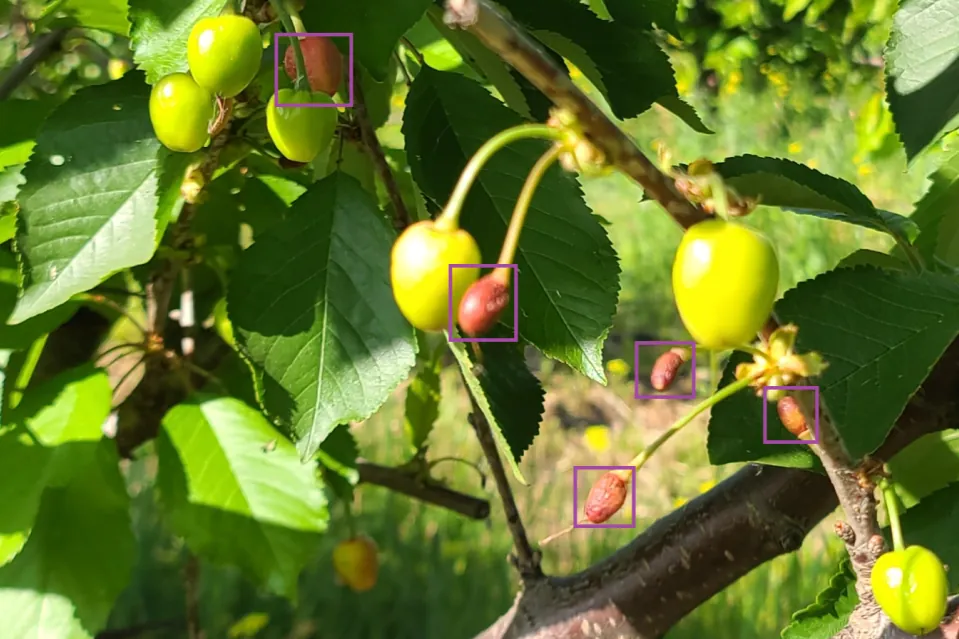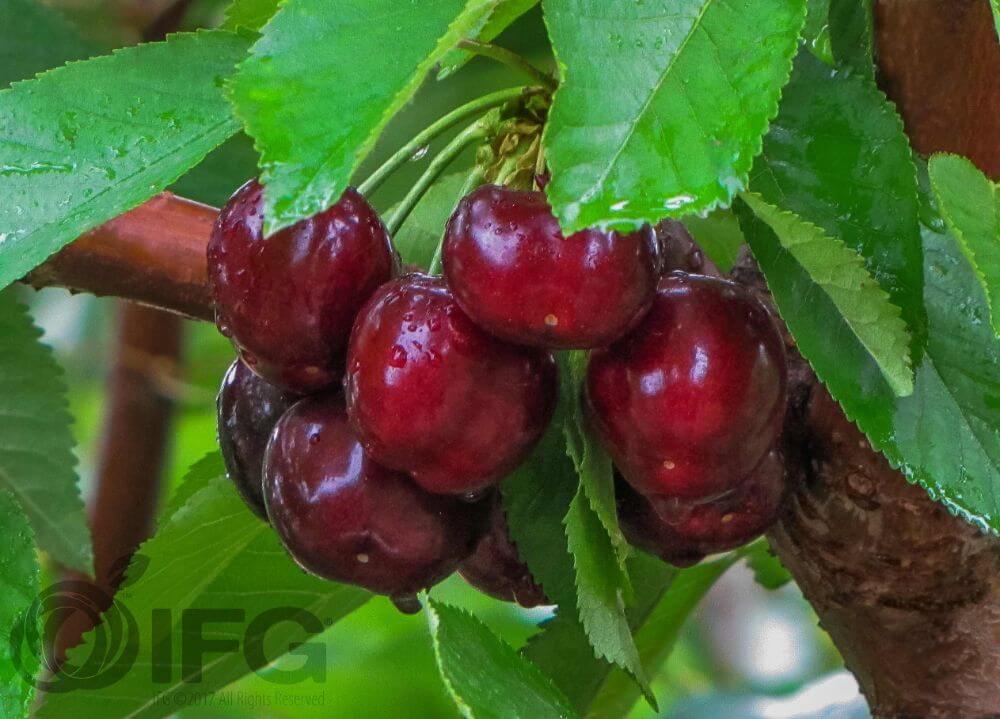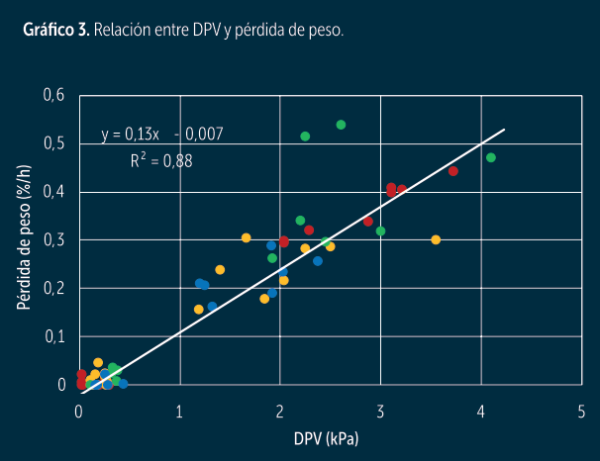Fruit drop is not a passive event; it is an active physiological process of abscission, regulated by a complex hormonal balance (Orzáez et al., 2018). The tree’s “decision” to shed a fruit is based on the balance between auxins (which inhibit drop and are produced by viable seeds) and promoters such as ethylene and abscisic acid (ABA).
This season, several environmental stress factors have destabilized this balance. A deficit in winter chill accumulation can lead to weak flowering, reducing the initial fruit set potential (Mundoagro, 2025). Later, water stress events or spring temperature fluctuations can alter hormone production, triggering abscission (Orzáez et al., 2018).
However, the most significant drop, known as “pasma” or “second drop,” occurs weeks after fruit set. This is not due to poor pollination, but to intense carbohydrate competition (Ayala, M. & Carrasco, O., 2021). Through a form of self-regulation, the tree evaluates its leaf-to-fruit ratio and discards the fruits it cannot support energetically.
It is precisely after this event that the real fruit load becomes defined, making this moment the critical window for yield estimation (Gilson et al., 2024).

From uncertainty to risk
The inability to accurately quantify post-pasma fruit load turns a physiological uncertainty into a tangible economic risk. The impact emerges in two critical areas:
• Harvest logistics: harvesting is the highest cost item in cherry production, reaching 50–60% of total costs (Seavert et al., 2013). An inaccurate yield estimate leads to inefficient logistical planning. Overestimating the load implies excessive hiring and resource allocation, inflating costs. Underestimating it is even worse: insufficient labor during the critical window causes fruit losses due to over-ripening, destroying value.
• Commercial negotiation: fruit counting is a “critical technical tool” for profitability (Parra, 2025). A grower negotiating with buyers based on visual estimates or manual sampling with high variability starts from a position of weakness. The ability to present solid data on the volume and distribution of the load makes it possible to secure advance sales contracts and optimize the commercial strategy.
Mitigating risk
Historically, the sector has relied on manual counting methods. Although a standard practice, these methods are slow, labor-intensive and, most importantly, imprecise. Researchers at INTA have highlighted that manual methodologies “are not always accurate and require a great deal of measurement time in the field” (Del Brío, 2021).
This is where precision agriculture comes into play, offering a transformative solution. Using SENSAGRI’s services as an example, the contrast is striking: traditional methods can show a Mean Absolute Percentage Error (MAPE) of 38%. SENSAGRI’s “AI-Assisted Counting” service, which combines georeferenced field sampling and AI-based image analysis, reduces that error to less than 10% (SENSAGRI, 2024).
This 28-point reduction is not a marginal improvement; it is a paradigm shift. It allows farm managers to plan harvest logistics (which account for 60% of their costs) with surgical precision, and commercial managers to negotiate using verifiable data.
Conclusion
Modern cherry orchard management is, in essence, the management of uncertainty. Even if we cannot control “pasma” caused by environmental stress, we can measure its effects with precision. The adoption of AI-based counting technologies transforms yield estimation from a subjective art into an applied science, providing the data needed to optimize logistics, ensure profitability, and remain competitive in a global market.
Source: www.linkedin.com
Image source: Sensagri
Cherry Times - All rights reserved













